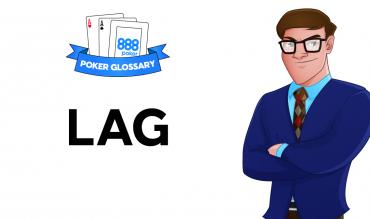Explanation of LAG
It’s common to use various abbreviations to describe different types of opponent at the table. Here is a non-exhaustive list.
TAG – Tight Aggressive
LAG – Loose Aggressive
Nit – Exceptionally tight player
Maniac – Loose and crazy
LP – Loose Passive
TP – Tight Passive
The other type of “lag” refers to freezes and pauses in an online poker game caused by network issues or hardware problems. Professional players do all they can to play poker in a lag-free environment. Not only is lag distracting and frustrating, but in extreme cases we may find ourselves timing out in the middle of big pots which is damaging to our winrate.
To ensure protection from disconnection drops, may professional players have at least two internet connections running simultaneously. If one drops or begins to lag, they can use the other as a backup. It’s better to pay $30 a month for a second ISP than to risk timing out in a $2,000 pot.
Example of LAG used in a sentence -> It’s not a good idea to open-raise too wide on the button when there are LAGs in the blinds.
How to Use LAG as Part of Your Poker Strategy
LAG players player a large amount of starting hands and proceed to play aggressively on the later streets. LAG style poker generally requires more skill than TAG style poker, and it’s generally accepted that a good LAG can make more money than a good TAG.
Most poker schools advise starting out with a TAG style and gradually loosening up as our skills improve. A smaller number of poker schools, especially those found in Northern and Easter Europe tend towards advising a LAG approach from the outset.
When facing a LAG which should generally look to use their aggression against them by finding good opportunities to trap made hands and bluffcatch. Good LAGs are also generally capable of folding to aggression, whereas many bad LAGs also end up being calling stations.
See Also


